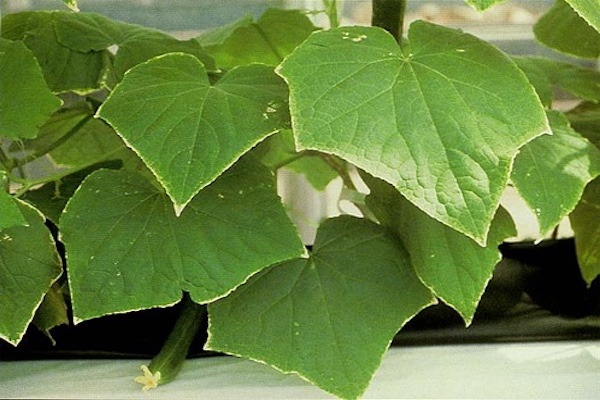Plants care
Manage your farm
Monitor your plant health
Address deficiencies
Seeding
Seed leafy green in sponge blocks and tall plants in Pasir Malang in AHApots.
The AHApot is specially designed for Aquaponics to hold all media.
Seeding steps for leaf greens:
- Place the seeds about 1 mm into the center of the sponge in the central crosscut
Place the sponge blocks in a perforated tray in the germinator. Germination takes about seven days. Follow the instructions of your seeds company, as certain seeds require a specific temperature to germinate.
- After about seven days in the germinator, the seedlings are strong enough to be moved to the nursery in high-density AHAtrays. The plant has four leaves, and you should see a long root at the bottom of the song blocs.
Cooking herbs like for example parsley, coriander, and basil, are seeded directly in the AHAtray full of AHAS Pasir Malang.
Plants like for example kale, tomatoes, peppers, and chili, are seeded in AHApots half filled with Pasir Malang and placed in the germinator. The plants germinate in about seven days in AHAS germinators until they get 2 to 4 leaves and grow a fist root towards the water. Then they are transferred into pots and placed for another 14 days in the nursery or in AHAtrays inside the MIT
Nursery
Once they have germinated, move the sponge blocks into the AHApots, placing these in the holder. The root will grow through the pot bottom slots.
Place the pot in the AHAtray with holes in the nursery.
Once the plants get bigger than the pot, move them into the AHAboards at 60 plants per board. The AHAboards and AHApots are designed so that the pot base is 5mm from the water. This air gap helps produce air roots, maximize growth, and keep the sponge and the stalk of the plant as dry as we can.
Do not water the plant from the top. Keep the sponge dry.
Plant health
Check all plants. Search for perforated leaves possibly hosting caterpillars and remove the cause of the issue. Check for aphids and cochineals, …
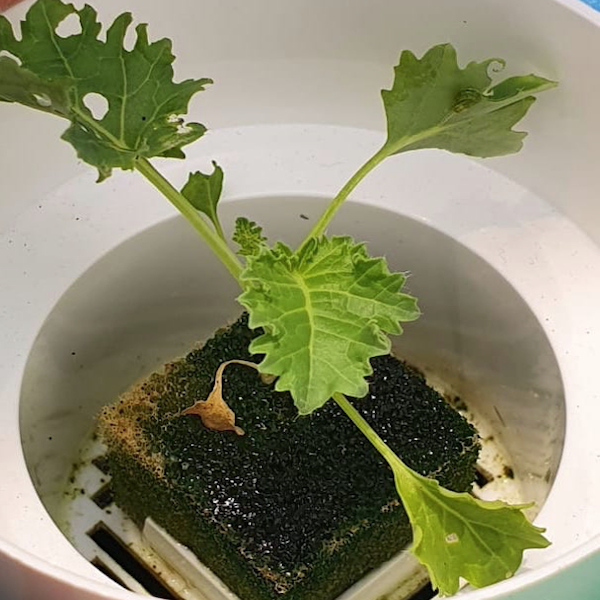
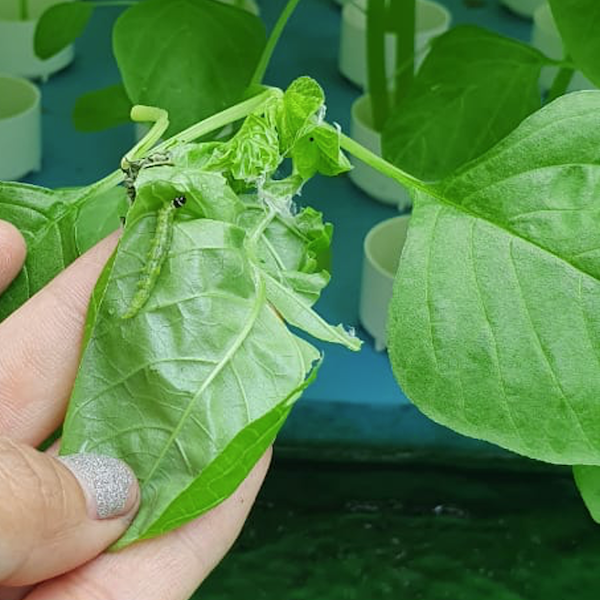

Required minerals
In addition to the three key elements of nitrogen (N), phosphorus (P), and potassium (K), which are essential to all plant growth, there should be at least ten trace elements present in your nutrients. All have specific functions.
Nitrogen
Necessary for producing leaves and stems. It is also an essential ingredient in building plant cells.
Magnesium
involved in the process of distributing phosphorus throughout plants
Calcium
Encourages root growth and helps plants absorb potassium.
Phosphorus
Required to develop flowers and fruits and aids in the growth of healthy roots.
Potassium
used by plant cells during the assimilation of the energy produced by photosynthesis.
Sulfur
Assists in the production of plant energy and heightens the effectiveness of phosphorus.
Iron
Vital in the production of chlorophyll.
Manganese
Aids in the absorption of nitrogen, an essential component in the energy transference process.
Zinc
essential component in the energy transference process.
Copper
Needed in the production of chlorophyll
Boron
Required in minute amounts, but it is not yet known how plants use it.
Chlorine
Required for photosynthesis
Molybdenum
Assists in several chemical reactions
Plant deficiencies
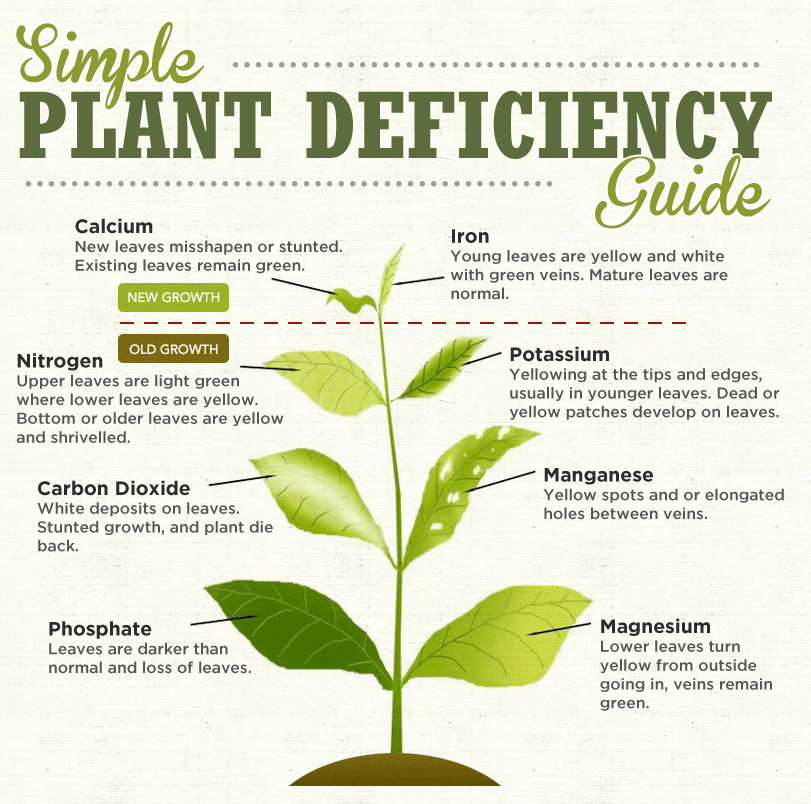
Organic mineral supplement
AHAS has developed, and tested for several years, a special MinMix to supplement all aquaponics systems.
Calcium
Plants are stunted, having distorted, cupped leaves and characteristic interveinal chlorosis.
Symptoms appear first on new growth. On fruiting plants such as tomatoes and squash, blossom end rot will occur.
The easiest to detect calcium deficiency symptom is Blossom End Rot (BER). First, a darkened spot appears on the end of the fruit furthest away from the stem. It will grow larger, and that part of the fruit will likely become sunken into the fruit. The color could be grey to brown.
Do not confuse this with a potassium deficiency.

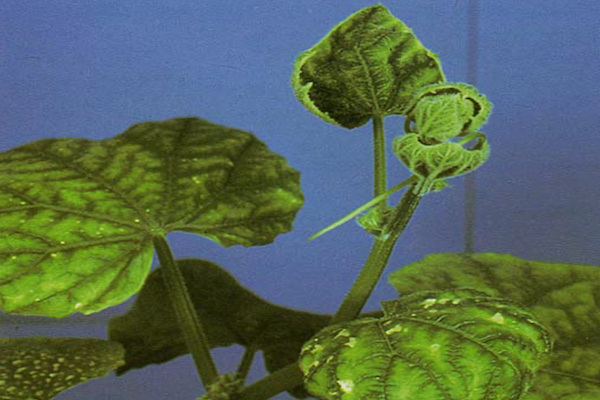
Quick Guide to Calcium Deficiencies
- Look for dead brown spots on the fast-growing stems of the young parts of the plant or on the leaves.
- Look for grey to brown spots on the fruit especially on the blossom end of the fruit. BER.
Correcting Your Calcium Deficiency
- pH above 7.0: Calcium Chloride applied in a spray form on plants only.
- pH below 7.0: Calcium Carbonate
Phosphate
The purple coloring of the leaves starts in the veins. In severe cases, the whole plant may take on a purple hue. In some cases, the leaves will appear dark green. Purple is normally found on the bottom side of older growth leaves.
In more severe cases, the leaves have dead brown spots.
Quick Guide to Phosphorous Deficiencies
- Purple color underside the leaves
- Poor fruit production
- Spindly growth that is about the correct height
- Not to be confused with a magnesium deficiency.
Correction
- Rock Phosphate
- Burned and dissolved
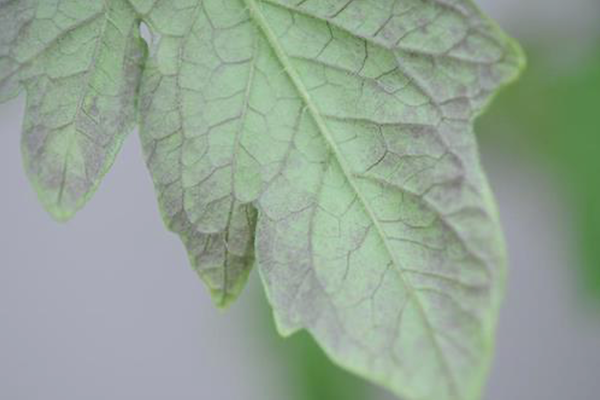

Magnesium
Magnesium deficiency starts on older leaves. They show inter-veinal chlorosis on the leaf margins and some whitish to light brown necrotic dots. If deficiency is severe, inter-veinal chlorosis progresses from the margins to the middle of the leaflets. The small veins also become chlorotic, but the bigger veins remain dark green first. Subsequently, the whole leaves become yellowing, and finally, the older leaves die. In this case, growth is severely impaired, and fruit yield is reduced.
Magnesium deficiency is one of the ones that can look like some of the others and, therefore, can be harder to diagnose. It can look like phosphorus deficiency, but the leaves will not be purpling. Some brown spots could be mistaken for a calcium deficiency without Blossom End Root.
Quick Guide to Magnesium Deficiencies
- Old growth is mostly affected.
- Yellowing primarily between the veins of the leaf.
- Older leaves turn yellow at the edges, leaving a green arrowhead shape in the center.
- Dead fringes at leaf edges or brown spots on the leaves.
- Most affected leaves will start to fall off.
Correction
- Magnesium sulfate (Epsom Salt)
- In low pH, calcium carbonate also contains magnesium
For quick results or to boost fruit production on specific plants, foliar spray.
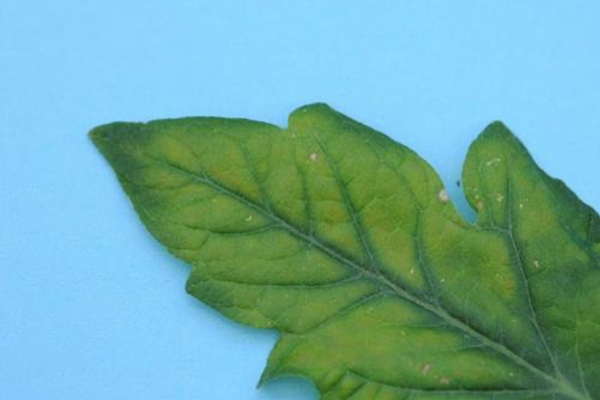

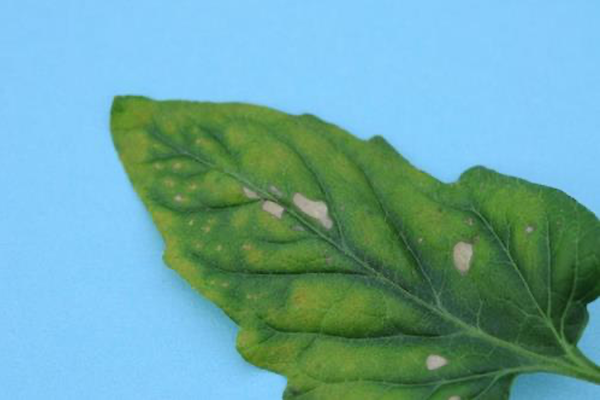

Iron
Low iron looks very similar to a Nitrogen deficiency.
Usually, an iron deficiency in new growth occurs when the entire leaf shows a yellowing or Chlorosis.
In mature leaves, there is a very noticeable yellowing between the veins, and the veins maintain their dark green color.
Low iron levels compromise the plant's ability to make chlorophyll. It also is essential for the plant to synthesize proteins and absorb necessary nutrients such as nitrogen and phosphorous.
Too much iron in the system can cause the chlorophyll to change and then inhibit the plant’s ability to absorb sunlight energy. It can also impede the plants' ability to take up nutrients and die. Iron over-saturating is worse than deficiency
Quick Guide To Iron Deficiencies
- Young growth is most affected.
- Yellowing between the leaf veins.
Control and correction
The plants begin to show a deficiency from concentrations lower than 1.5 mg/l. The optimum concentration is 2.0 ppm.
- FeDTPA is available to plants from pH 6.0 to 7.5
- FeEDDHA is available from pH 5.5 to 9
Do not use EDTA chelate. This compound is stable at a pH of below 6.0, and at levels above 6.5, almost 50% of the iron will be unavailable to the plant. Additionally, this chelate has a high affinity for calcium and should not be used in soils (or water) rich in calcium.

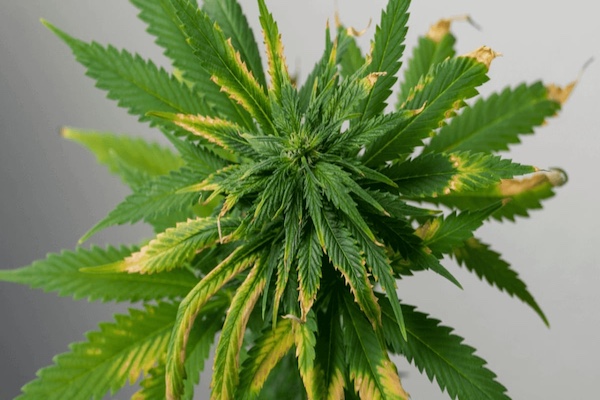
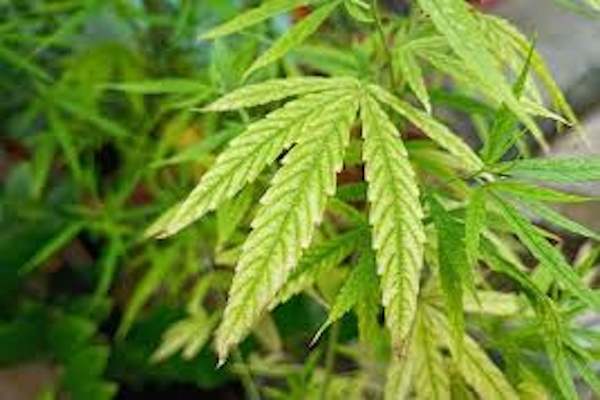
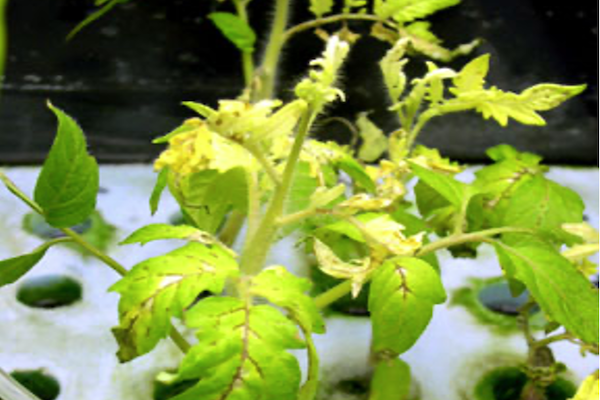

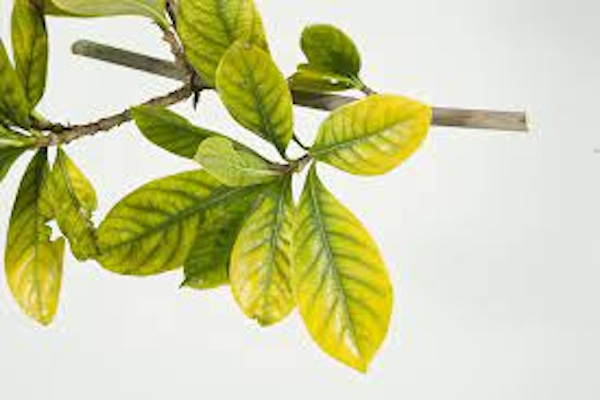
Potassium
Plants use potassium in four significant ways:
Signaling:
Potassium is an important signaling ion because it’s simple, soluble, and charged. This means that plants use potassium to communicate between the different cells and parts of the plant, coordinating growth and reproduction and mounting defenses to diseases and pests. (Potassium-deficient plants are more susceptible to pests)
Water movement:
Potassium is also a simple and effective ion to control the osmotic potential of plant cells. The plant uses tiny pumps to move potassium from one area to the next to “inflate” specific cells with water. Water moves from the cells with low potassium concentrations to those with higher concentrations. This allows the plant to keep its tissues full of water, which is essential since plants are mostly made of water.
Stomata (gas exchange): It also allows the plant to do things like open tiny pores in the surface of the leaves (called stomata) to allow gas to enter and exit the plant.
Building proteins:
Last but not least, potassium is essential in building proteins, which are crucial to plant survival.
Potassium deficiency Symptoms:
Cupping or “puckering” of leaves affects older leaves first. Leaf cupping is usually accompanied by a slight marginal chlorosis, with the leaf margins dying, especially at the tip in severe cases. Leaf symptoms accompany abnormal fruit development, with cucumber fruit often developing a brown or spotted appearance and melons developing abnormal flesh texture and off-flavor. In some cases, the tomatoes, when becoming ripe, will display areas that remain green.
Quick Guide to Potassium Deficiency:
- Old growth is most affected
- Yellowing between the veins
- Poor root growth
- Plant leaves are cupping
- Pants are wilting.
- Dry or dead edges develop.
- Stunted root growth.
You could have a potassium deficiency if any or all of these symptoms are present.
Correcting Your Potassium Deficiency:
K is often blocked by too much Calcium or Magnesium
pH from 7.0 and up:
- Seaweed Extract (powder) (0-0-10), pH neutral
- Potassium Sulfate (0-0-50)
pH systems below 7.0
- Potassium Hydroxide
All PH ranges.
- Potassium Chloride sprayed on the leaves of the plants only. (1/8 of a teaspoon per gallon)
